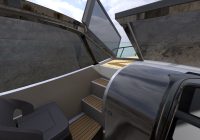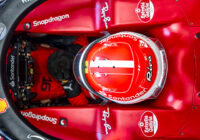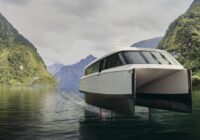From around 13 to 17 October a large high tech looking ship will be visible around Cocos. This will be the CSIRO research vessel (RV) Investigator. Marine scientists from around Australia are on-board as part of a 35-day voyage to explore the marine area around Cocos (Keeling) Islands. The scientists and technicians on board will be mapping the seafloor and surveying the sea-life that lives at great depths in this part of the Indian Ocean.
RV Investigator is part of the Marine National Facility, which is operated by CSIRO, Australia’s national science agency. It’s 94 metres long and 9 stories high. The big white dome above the bridge measures atmosphere conditions and the smaller ones are for internet and radio communications. The A-frame at the rear of the boat is to lower cameras and other research equipment into the water. On board are 52 crew, technicians and scientists from all around the country.
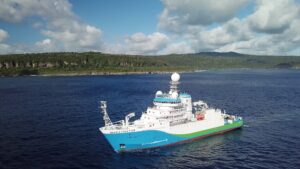
The RV Investigator off Christmas Island in July 2021 – it was meant to travel on to Cocos straight after but unfortunately had to return to port in Fremantle due to some equipment issues (image: CSIRO/Chris Bray)
My name is Tim O’Hara from Museums Victoria in Melbourne, and I am the chief scientist for this voyage. I am pretty excited to be exploring the waters around Cocos (Keeling) Islands. I had hoped to meet members of the community and provide an opportunity for people to come on board the ship, but unfortunately, the ship’s COVID-19 protocols don’t allow for this. I do hope to visit Cocos after the voyage to share research findings directly with the community.
We know from satellite measurements and historical geological expeditions that massive undersea mountains rise from the seafloor all around Cocos. Some of them are over 4 kilometres high and 70 km across. They were formed during the dinosaur era, up to 100 million years ago. There is one seamount about 150km to the south‑west of Cocos that nearly reaches the surface – it will be a focus of our research after we leave Cocos itself. These underwater peaks were originally volcanos and many became islands at one point with their crater above the sea surface. But rocks that formed from the lava were very heavy, and so, once the volcanos stopped being active, they very slowly sank into the soft ocean floor. Many are now 1 to 2 km below the sea-surface. We are going to map many of these ancient underwater volcanos for the first time. Cocos (Keeling) Islands were formed in a similar way but molten rock under the ocean crust has kept sinking rates low enough for coral atolls to form on the seamount summits.
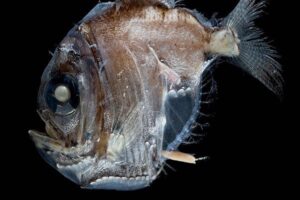
A deep sea hatchetfish. (image: Paul/Museums Victoria)
We expect these seamounts will be home to fascinating creatures like deep-sea coral and sponge gardens. There will probably be weird looking fish with huge fangs or with special organs that can produce their own light. We will be taking as many photos and videos as we can, so that people on Cocos and around Australia can see the special creatures that are hidden in these deep waters.
We are looking forward to connecting with Cocos school students and Cocos Marine Care via livestream during the voyage, and we want to thank the Parks Australia marine park team for providing funding to support this voyage.
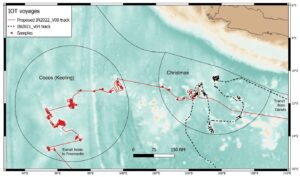
Proposed voyage track of the 2022 expedition on the RV Investigator to the IOT. T O’Hara/Museums Victoria
The voyage will provide new and fundamental knowledge of the deep-sea environment around Cocos to support management of the Cocos (Keeling) Islands Marine Park that the CKI community helped co-design during 2021.
The voyage has been made possible through a grant of sea-time on the RV Investigator by the CSIRO Marine National Facility. The research is being financially supported by Parks Australia and the Bush Blitz program of the Department of Energy, Climate Change, the Environment and Water. It is a national scientific collaboration with scientists participating from Museums Victoria, Australian Museum (Sydney), CSIRO, and Western Australian Museum.





